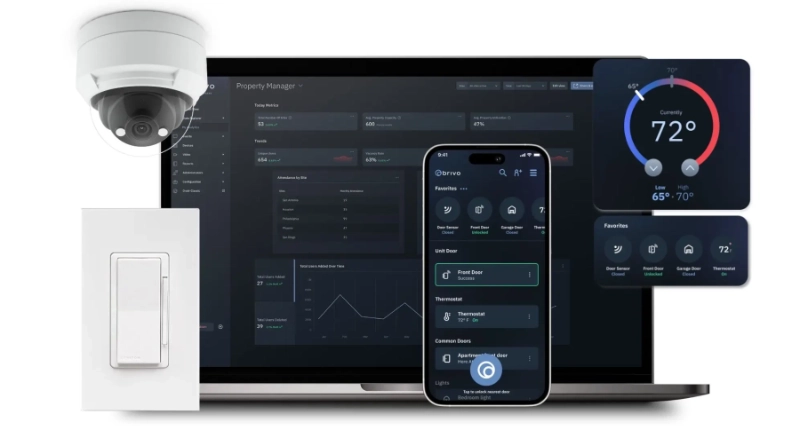What business leaders should consider as they plan for a permanent hybrid work environment.
The turning of the calendar into a new year typically sets the groundwork for individuals and companies to make a fresh start. Budgets and quotas are reset and optimism is high to achieve great success in the new year. This year certainly carries that annual excitement renewal about what is to come in 2022, but also starts with renewed concerns over the pandemic and uncertainty as to what comes next.
One thing is certain: hybrid working models are here to stay. Organizations across the globe are adopting new technologies to enable hybrid work models, some allowing employees to permanently work remotely and others implementing processes to ensure that those who cannot be remote or hybrid are protected when they are onsite.
From an employee perspective, the preference is clear, hybrid working models are preferred. In our just-released follow-up report; Home Unbound: #2 Transitioning Back to the Office After COVID conducted in partnership with WhosOnLocation, 78% of workers responded that they prefer to work from home at least some of the time.
As for productivity, many business leaders have raised concerns that employees who are not in a physical office would be significantly less productive, but those worries have been eased. Workers also echoed that sentiment in our report with 53% saying that their productivity was the same or better working from home than in the office, with 36% of that population saying they were more productive.
Different Perspectives From Workers
As business leaders, it is also important to understand concerns and differences among your work population. From our report, 52% of employees still have health and safety concerns about returning to an office. This is down from 62% in May 2021 but is still a majority of employees. While vaccinations are key to fighting the pandemic, they are also subject to a cultural debate amongst employees. From our research, the majority, 53% of respondents, want their workplace to require proof of vaccination. Creating a culture onsite where everyone is taking the appropriate precautions is imperative—especially for the majority of workers that have safety concerns. Many do all they can to protect themselves by taking precautions but are concerned that others in the workplace are not.
There are also regional differences across the U.S. on how employees want to work, and business leaders need to be sensitive to regional preferences. Workers in the southwest prefer hybrid work (47%) to other models, while employees in the northeast prefer work from home (50%). Employees in the southeast had the highest percentage of workers that preferred to be on-site (30%). The bottom line for leaders is that there isn’t a clear one-size-fits-all approach going into 2022 and you must look at how you enable your workforce to be most productive and happy with their work environment.
So, What’s Next in 2022?
Organizations are gearing up for a return to work with a hybrid model. Floor plans are changing and policies are evolving. What is clear is that technology is playing a bigger role in enabling the hybrid work model. Organizations are implementing tools for visitor management and granting remote access, room and space booking, hotdesking, and much more to enable workers to utilize the office spaces effectively and safely.
How Can Brivo Help Business Leaders Transition to Hybrid Models?
Access management is foundational to managing a hybrid work environment and enabling these tools. Without access controls in place and integrated with the hybrid workforce technology stack, it is nearly impossible to enforce the policies and practices you are putting in place.
For example, a hotdesking solution without the ability to actually grant access to the building, space, suite, or office is not feasible. Conference room reservations without appropriate controls over entry to the room defeat the purpose of reserving the space.
Likewise, visitor management tools must offer the ability to enable and control access for where people can go in the office – a critical step in managing workplace safety and security. It’s clear that a significant portion of workers don’t feel totally safe in the office yet, and visitor management systems can go a long way toward providing reassurance that clear health and safety protocols are being followed and tracked. Digital tools can monitor who is on the property – from employees to visitors to contractors – and maintain strong communications with everyone involved.
Brivo is the core to supporting organizations as they plan and implement their hybrid work strategy and tech stack to enable this model to work. Our cloud-based access control is integrated across the workplace and facility management ecosystem to create simple, easy access to employees, visitors, contractors and customers and enable effortless enforcement of your hybrid work policies across key areas:
- Workplace optimization
- Energy management
- Healthy spaces
- Health-safety
- Occupancy
- Tenant experiences
Consider Employee Expectations As You Plan for 2022
Brivo and our partners at WhosOnLocation invite you to read the full report to learn what workers are saying about their expectations and concerns for return.
Home Unbound #2: Transitioning Back to The Office After COVID













